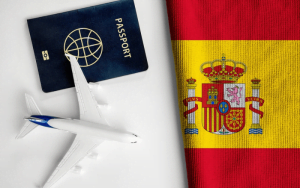The history of Semana Santa (Easter)
This year’s Easter celebrations will begin on March 29th, Palm Sunday; the full schedule and itineraries for Marbella can be found at https://www.marbellafamilyfun.com/marbella-easter-processions.html
Easter in Spain is one of the most breathtaking celebrations on the planet. Although Easter is celebrated throughout the entire country of Spain, nowhere else are the celebrations more extravagant than in Málaga city. Andalusia is well known around the world for its Easter celebrations. Most if not all of Málaga’s hotels are pre-booked up to 5 years, meaning you have to wait a long time for a place to stay; that is if you plan on visiting this culturally diverse city at Easter.
What is it about Easter in Málaga that gets people so excited? After all, isn’t it just a religious holiday? Well, yes and no. Yes, of course, Easter is a major religious holiday for Catholics worldwide; Easter if you don’t know, pays homage to the crucifixion of Jesus Christ and celebrates his resurrection. However, the celebrations in the south of Spain garner the attention of everyone no matter their creed.
But unlike other European Christian countries, where chocolate Easter bunnies are exchanged or the arrival of the sticky sweet mini crème eggs are hotly anticipated; Easter in Málaga believe or not dates back many centuries. The ‘Passion of the Christ’ started in the 16th century; the Catholics were desperate for a way to follow Jesus’ path. Semana Santa as you can well imagine started small, with no more than a few men carrying crosses. Fast-forward to today the men ‘penitents’ prepare for months to the lavish and extremely heavy floats.
Semana Santa means Holy Week, and on the Costa del Sol, which includes Málaga, Marbella, San Pedro and several other towns and villages; Easter can only be described as a one-of-a-kind display of tradition. As previously stated, even though Semana Santa takes place across the country, the best places to visit during Holy Week are Málaga, Marbella and Seville.
Semana Santa – The processions in Marbella
Just like Málaga, Marbella puts on an extremely impression procession. Holy Week in Marbella is of course incredibly important for most people in Andalusia. It is a form of religious expression, and surpasses all other events on the Catholic calendar – even Christmas. Marbella’s cultural activities might seem far reaching considering the cosmopolitan context of this famous city; however Santa Semana’s centuries old traditions do in fact shine through.
Holy Week is dedicated to the Passion of the Christ, where brotherhoods act out his last days before Christ’s death and resurrection. In Marbella there are nine brotherhoods of the passion, which includes those of Nueva Andalusia and San Pedro de Alcantara. It is these brotherhoods that are tasked with the procession of “Our Father Jesus of Mercy”; which is Christ’s entry into Jerusalem beginning on Palm Sunday. These incredible and awe inspiring processions continue throughout the week, a pilgrimage worthy of notoriety.
In all honesty, Semana Santa needs to be experienced in person, and whether you choose Málaga or Marbella, you won’t be disappointed.
Semana Santa in Spain: Interesting facts and information
- Holy Week or La Semana Santa in Spanish is a seven day celebration starting on a Sunday. The first day is Palm Sunday or el Domingo de Ramos in Spanish
- The word “ramos” means bouquets or branches
- Starting on el Domingo de Ramos, Spanish towns across the Costa del Sol have street parades every day
- In the processions, like in Málaga; people carry and follow floats known as “pasos”. The floats can weigh up to a tonne.
- Heavy floats are carried by men called costaleros. The costaleros practice for months so the rhythm and speed of how they walk are perfectly coordinated. The men must carry the weight of the float on their shoulders and neck.
- On these floats are statues of Jesus Christ, and the Virgen Mary or La Virgen Maria in Spanish. Each float is beautifully decorated with flowers, gold, silver, candles and fine fabrics.
- The floats are followed and surrounded by people known as nazarenos. The nazarenos are men, women and children wearing long robes.
- The veils or cone shaped hat’s are known as un capirote.
- The nazarenos keep their faces covered to remain equal and anonymous; helping them stay humble during prayer.
Quite often during the processions you will hear someone singing a special song called una saeta. These songs are sung without any musical instruments and often come from above on the balconies. The song is often somber or sorrowful, but beautiful; the singer’s voice seems to carry for a very long distance, and people far away from the procession can hear.
On Good Friday or el Viernes Santo, meat is not eaten. Most dishes on that day will contain fish and vegetables.
Another popular tasty treat during Holy Week is torrijas. These are thick slices of bread, soaked in milk and beaten egg. They are fried in olive oil and served with sugar or honey.


